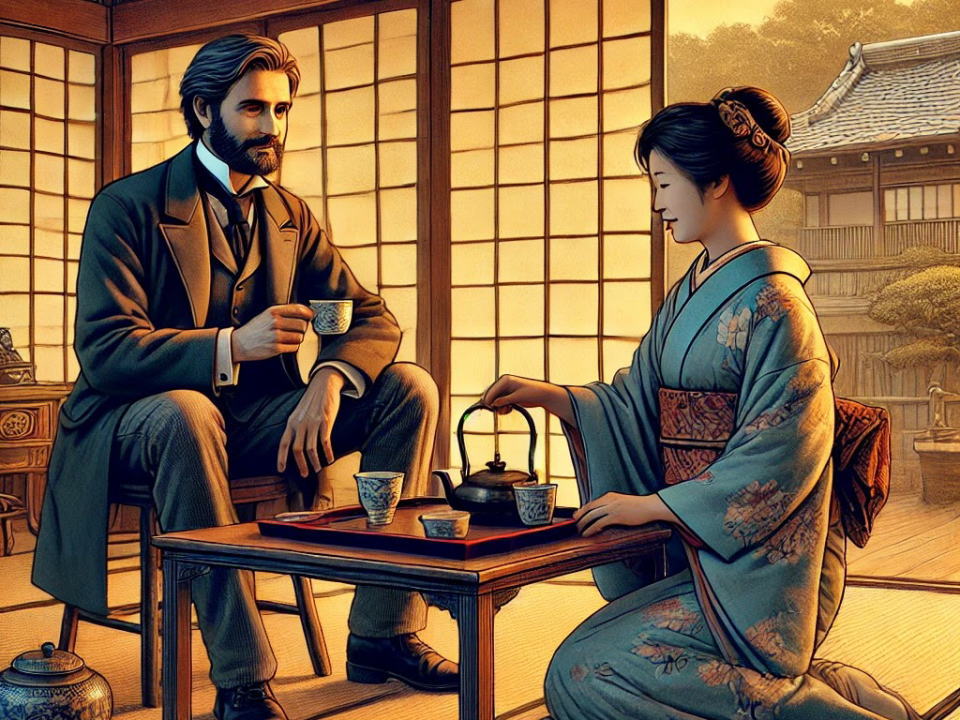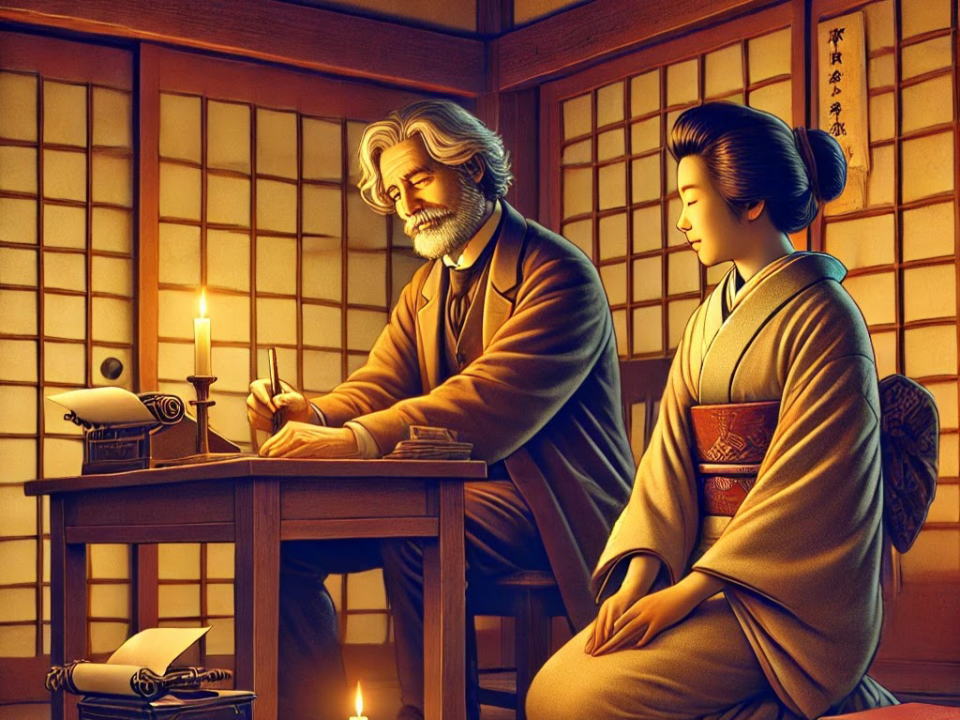
A New Beginning in Matsue
In 1890, Lafcadio Hearn (later known as Koizumi Yakumo) came to Japan as an English teacher, starting his career at Jinjo Junior High School in Matsue, Shimane Prefecture (now Matsue Kita High School).
For Westerners at that time, Japan was an unknown world, yet Yakumo found himself deeply fascinated by its culture—especially by the tranquil environment and time-honored customs of Matsue.
Shortly after beginning his life in Matsue, he started living with a Japanese family.
In that household, he was cared for by a woman who would later become his wife, Koizumi Setsu.
Setsu was the daughter of the former samurai Nishida family and was raised in a household that valued the traditions of the warrior class.
For Yakumo, meeting her was no mere coincidence; it felt as though fate itself had brought them together.
A Relationship That Transcended Cultural Barriers
Setsu recognized Yakumo’s curiosity and passion for Japan, and she played a crucial role in supporting his daily life.
At that time, interactions with foreigners were still uncommon in Japanese society, and cross-cultural marriages were particularly rare.
Nevertheless, Setsu embraced Yakumo with an open heart, becoming a true confidante and guide.
Although Yakumo knew very little Japanese when he arrived, he learned the language and the local customs through her.
Setsu also shared with him age-old ghost stories and folk legends—a treasure trove of narratives that undoubtedly influenced his later acclaimed work, Kwaidan: Stories and Studies of Strange Things.
Marriage and the Start of a New Life
In 1891, the couple married formally.
With this union, Yakumo adopted the name “Koizumi Yakumo” and embarked on a new life as a Japanese citizen—a monumental change for a man raised in the West.
Following their marriage, Yakumo deepened his understanding of Japanese culture and began to reflect the spirit of Japan in his writings.
He played a vital role in introducing Japan’s traditional values and aesthetic sensibilities to the Western world, serving as a bridge between two very different cultures.
A Partnership of Mutual Support

For Yakumo, Setsu was more than just a wife—she was a mentor in his journey to understand Japanese culture.
She generously shared her extensive knowledge of Japan’s traditions, myths, and folk lore.
Many of the legends and ghost stories Yakumo encountered during his time in Matsue and Kumamoto were recorded under her influence.
For Setsu herself, marrying Yakumo was a new challenge.
Supporting a husband with a different cultural background while aiding his research and creative endeavors was no easy task.
Yet, she chose to stand by him and nurture his literary pursuits every step of the way.
Yakumo’s Final Days and Setsu’s Devotion
In 1904, Koizumi Yakumo passed away in Tokyo.
After his death, Setsu honored his wishes by diligently preserving his legacy.
She organized his manuscripts and books and worked tirelessly to spread his reputation both in Japan and internationally.
It is thanks to her unwavering dedication that Yakumo’s works continue to be read by countless people today.
Conclusion
The encounter between Yakumo and Setsu stands as a symbolic moment where Japanese and Western cultures intersected.
Their relationship went far beyond a simple romance—it was a deep bond built on mutual learning and respect for each other’s heritage.
Yakumo’s ability to captivate the world with the allure of Japanese culture was made possible through Setsu’s steadfast support.
Their story remains a valuable lesson in the importance of cross-cultural understanding, even in our modern world.
Reference
https://www.hearn-museum-matsue.jp/ (Koizumi Yakumo Memorial Museum)
https://www.kankou-matsue.jp/ (Official Matsue City Tourism Site)
https://www.jnto.go.jp/ (Japan National Tourism Organization)
